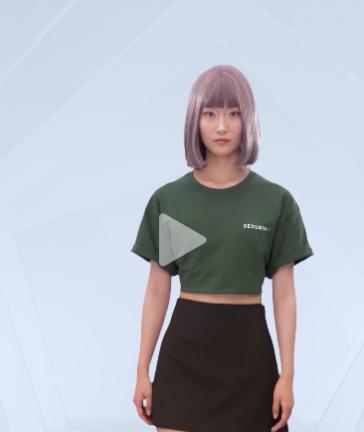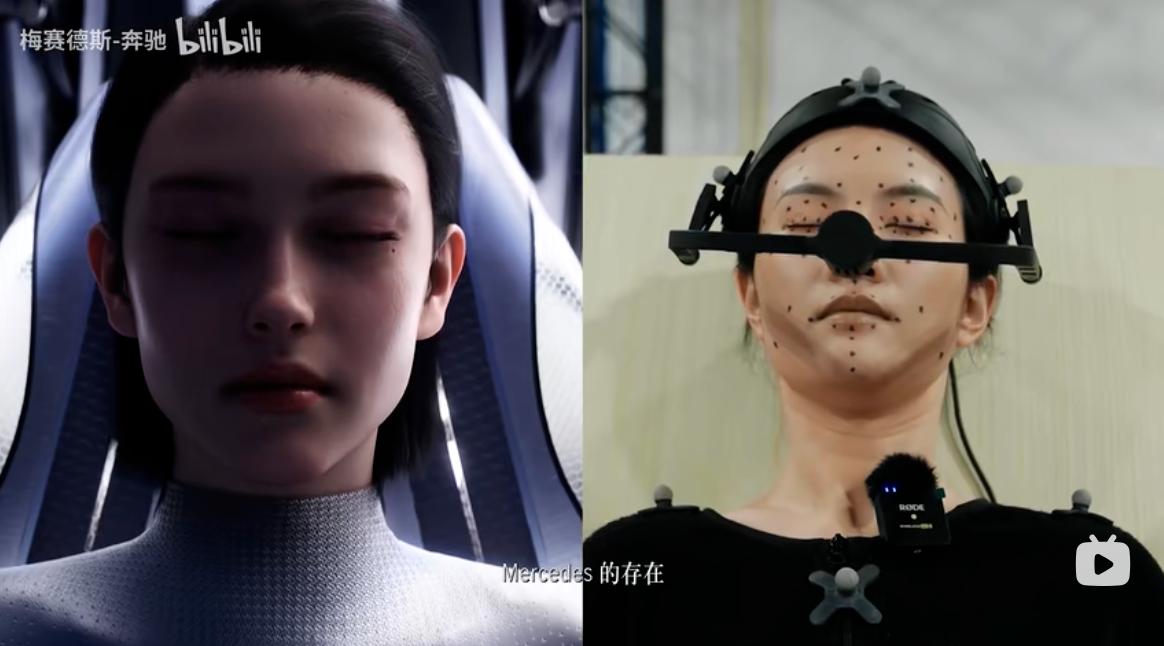3D virtual human images may create greater commercial value in the NFT market
Author: Virtual Person
When the NFT market was still in a bull run, everyone chose NFT projects based on beautifully designed NFTs. By obtaining whitelist spots through various channels, they would actively participate in the minting process, and as long as they could sell on the secondary market, they would see several times their investment as profit. The logic of profit at that time was very simple: as long as the NFT project was beautifully designed and had a grand narrative, there would always be users who could not participate in the minting process and would buy in on the secondary market.
The myth of wealth creation attracted many people to participate in this game of passing the parcel. Since this was a purely seller's market, even though various projects were mixed, the technical barriers to participating in NFT projects were still very high at that time, leading to supply being less than demand. We were constantly reinforced in our belief that NFTs could enhance our understanding through projects that quickly created wealth effects.
If this was the logic of making money during the NFT bull market, it must also be the logic of losing money during the NFT bear market. The decline in cryptocurrency prices led to many funds and users exiting the market, while various NFT issuance tools matured, making it very easy to launch NFT projects. Anyone with a bit of learning ability could establish an NFT project in a very short time.
The NFT market officially transformed into one of oversupply and insufficient demand. In this market, every participant harbored the illusion of the wealth effect reappearing from the original NFT market, while also being like a startled bird, frantically lowering prices at the slightest drop, hoping to recover some funds. Thus, the NFT project market became a place where flippers focused on countless projects every day, never researching the potential value of each project or whether they liked and appreciated it. Everyone just fomoed in mindlessly, regretting not selling at the peak and cursing the project team as frauds when prices fell below the floor.
This scenario is all too familiar; the chaos of the ICO market in 2018 also began at the tail end of a bull run and deepened further with the bear market. As funds exited, most ICO projects could no longer raise capital, but some with long-term plans that persisted made it to the bull market at the end of 2020, with their token prices increasing by hundreds of times.
The lessons from the past serve as a guide for the future. If the current NFT market situation is a replica of ICOs, what kind of projects will stand out in the next bull market and bring hundredfold returns?
Current blue-chip projects? Perhaps they have ample funding and strong community support, increasing their chances. If we delve deeper into this logic, funds will eventually run out, and communities will also become disappointed and fade into silence. The only thing that will not change is that NFT projects that continuously create value for holders will bridge the deep chasm of the bear market and soar in the bull market.
What does it mean to create value for holders? It means allowing holders to gain not only capital appreciation from the rising floor price and increased liquidity of their NFTs but also to continuously receive stable income, turning them into income-generating assets.
The key to becoming an income-generating asset is not for the project team to issue token airdrops, but to create higher value through products and services contained within the NFTs in another market with higher returns. Funds will flow from that market to provide stable income for NFT holders. When this stable income is discounted, it will drive up the floor price of NFTs and increase liquidity, forming a positive flywheel effect.
Many find the above convoluted explanation hard to understand, so let’s illustrate the concept of continuous value creation with a simple example.
BAYC is a myth in the NFT space; all NFT projects aspire to become the next BAYC, hoping to establish an IP that attracts public attention and draws many users, then commercializing the IP to create ongoing income for NFT holders.
The commercial application of the Bored Ape IP is that BAYC's NFTs successfully broke out of Web 3, being held by enough celebrities in the real world, triggering a massive market dissemination effect, elevating BAYC to the status of a luxury brand in the NFT space.
It is precisely this label that has deeply embedded itself in the public's impression, allowing the Bored Ape IP image to help brands shorten the cycle of building brand trust in Web 2 and the real world, reduce the cost of brand establishment, and generate sufficient attention and market discussion.

Because the holding cost of NFTs and the time cost + opportunity cost + capital cost required to build a brand have a huge price difference, there will naturally be a continuous demand for purchases flowing in from Web 2 and traditional times, forming the price support for BAYC.
At the same time, resourceful BAYC NFT holders can also obtain stable income through renting out or selling IP licenses, turning NFTs into income-generating assets. In this process, users who can create more commercial value for NFTs buy BAYC NFTs from the original holders, allowing the community to continuously create new commercial application cases, further solidifying the value foundation of BAYC.
These are the new values that BAYC continuously creates for NFT holders, transforming the zero-sum game between holders into a positive-sum game. The value obtained by holders is not an asset created out of thin air by BAYC, but is supported by real-world commercial demand. This allows the project to attract external funds and users to support its value, avoiding the drumbeat of competition among NFT holders, giving BAYC the confidence to weather the bear market.
So, what characteristics do NFT projects that cannot continuously create new value have?
Completely relying on the rapid growth of Web 3 users and funds for the growth of the NFT project;
No planning for future sustainable development, no roadmap, and no understanding of what resources the team can create in the future;
Having grand narratives and roadmaps but lacking a clear completion timetable, with no substantial progress made;
Limiting all new value creation to the Web 3 world, such as issuing tokens, fragmenting NFTs to lower ownership costs, and continuously obtaining priority rights from other Web 3 projects for holders. Because the created value lacks support from actual assets or does not have stable and significant cost or revenue differences, these business models cannot be sustained, let alone quickly replicated to achieve scale;
Abandoning the project before establishing a strong autonomous community;
The above five situations will ultimately lead to one result: the inflow of incremental funds and users is far lower than the outflow speed of existing NFT users and funds, eventually entering a death spiral.
Earlier, we discussed how the BAYC project successfully established an IP and commercialized it. Such a path is no longer replicable at this stage. Only in the early stages of a market where supply is far less than demand can such commercial myths emerge.
If we trace back, the core reason for BAYC's success lies in finding a market opportunity with a significant cost and revenue gap, allowing users who can seize such opportunities to continuously purchase NFTs from original holders, driving up the floor price of NFTs while attracting more resources, enhancing the community's ability to create new commercial value, and the close connections and collaborations among holders create new value that far exceeds the holding costs. So, are there still such opportunities? Let’s analyze what narratives existing NFT projects are discussing.
The vast majority of NFT projects initially lack sufficient user bases and celebrity supporters, the IP lacks value, and as the market enters a bear phase, the absence of wealth effects eliminates the possibility of rapid expansion, thus making games and the metaverse the ultimate grand narrative chosen by NFT projects.
Games:
Only a few NFT project teams have experience in game development and can secure sufficient funding. Most NFT projects will create corresponding character battle values through various NFT traits for PVP or PVE gameplay. However, the simple and crude gameplay and uncontrolled token output fall far short of community members' expectations for the game, accelerating the disintegration of community consensus and leading to a spiral decline in prices.
For NFT projects aiming for games as the ultimate goal, the solution lies in achieving AAA game quality in gameplay rather than relying on economic incentives to attract gamers and funds from the traditional world.
Currently, there is no project in this track that can achieve the above goals, but we can pay attention to the Digi Daigaku NFT project, as its two founders are well-known game designers Gabriel Leydon and Halbert Nakagawa. They have released several well-known mobile games, such as "Game of War: Fire Age," "Mobile Strike," and "Final Fantasy XV: A New Empire." If they can make breakthroughs in playability, they may successfully attract new users from traditional game companies.
Metaverse:
Everyone believes it is the future, but no one knows how to implement it. The biggest difference from games is that games have clear objectives, such as defeating the final boss. Once the goal is achieved, the game ends. Therefore, games introduce social mechanisms and PVP gameplay to diversify objectives and extend their lifespan, but ultimately face the end of the game once the objectives are achieved or become vague.
The biggest problem with the metaverse is the lack of clear objectives. Once the first batch of users enters and fully experiences the metaverse's infrastructure, socializing with strangers, when the novelty wears off, they lose the corresponding motivation. This is also why established metaverse projects like Sandbox and Decentraland currently have daily active users in the low hundreds.
Without sufficient popularity in the metaverse, commercial collaboration becomes impossible. As residents of the metaverse, 3D virtual beings are poorly made, failing to form effective emotional connections, which further reduces their popularity.
If the method for NFT projects aiming for games as the ultimate goal to continuously create value is to improve game quality and playability while lowering user participation costs to attract AAA game users for sustainable project development, then for NFT projects aiming for the metaverse as the ultimate goal, the opportunity to continuously create value lies in high-fidelity 3D virtual beings.
Currently, the market size for virtual beings has exceeded 20 billion yuan and is expected to reach 270.3 billion yuan by 2030. Among them, identity-based virtual beings will dominate (approximately 175 billion), gradually becoming an important part of the metaverse; service-based virtual beings will develop relatively steadily, with various conversational services upgrading to digital virtual being forms, totaling over 95 billion.
- Huge market demand for brand commercialization
A mainstream method in traditional brand marketing is to hire spokespersons for brands or products. By showcasing the use and appreciation of the product through endorsements, they attract the spokesperson's followers to transfer their goodwill to the brand and product. Additionally, the spokesperson's persona continuously reinforces the brand's tone, embedding it deeply in the audience's memory, so that when a need arises, they can immediately think of the relevant brand and product.
However, in 2022, hiring high-fidelity virtual beings as brand spokespersons became a trend, and we can see the following cases:


361-degree virtual spokesperson, the first virtual employee of Sequoia China: Hong

Mercedes-Benz virtual person video advertisement
Watsons, Puma, and Nike also have corresponding virtual spokesperson advertisements for mass communication.
What pain points do high-fidelity virtual beings as brand spokespersons solve?
- Avoiding the blemishes in personal life and legal issues of real spokespersons, which could lead to financial losses and damage to brand image due to terminated collaborations;
- Solving the problem of celebrities not having enough time to cooperate with promotions; virtual beings can assist brands in various promotional activities year-round, from video ads and print ads to attending events and e-commerce live streams;
- The persona of virtual beings can be created and changed according to the brand's tone, allowing for a shift from a sunny and positive persona to a unique persona, and different story backgrounds can reinforce or adjust the impression of the virtual being spokesperson among users;
- Compared to the annual rental concept of spokesperson fees, the ownership of virtual being images is a one-time investment and will not lead to user loss due to changes in spokespersons;
Using virtual beings as spokespersons will significantly reduce total ownership costs compared to traditional spokesperson practices. Brand budgets can fully support having a virtual being spokesperson for each product line, rather than only being able to hire celebrities for star products. By using spokespersons, there is an opportunity to bring continuous attention to this product line, allowing commercial returns to exceed cost expenditures.
- Virtual beings replacing real people as the stars of videos and live streams
The application of virtual beings on video and live streaming platforms emerged in 2021. Liu Yexi, launched on Douyin, gained 8.98 million followers and received 31 million likes in less than two months, with only 13 pieces of content published, showcasing her influence.
Overseas virtual streamer Vox made her Chinese live streaming debut on Bilibili. Despite the entire stream being in English and lasting nearly two hours, it generated revenue of 1.11 million yuan, with nearly 40,000 paying users and an astonishing payment rate of 73.3%. The number of interactive participants exceeded 50,000, topping the real-time hot list that evening.
From these two cases, we can see that because virtual beings as streamers possess novelty and scarcity, video and live streaming platforms will direct a large amount of traffic to virtual being streamers. Using virtual beings as streamers is an extremely low-cost opportunity to gain traffic, and the growth of followers and video views will bring huge monetization opportunities through brand advertising and live commerce.
The above video features Douyin and Kuaishou streamer Luckybb using a dedicated virtual being to replace herself as the star of the video.
The huge cost of traffic acquisition on video platforms and users' curiosity, along with the tens of millions of content creators globally, create a massive demand for 3D virtual beings.
However, the main obstacle to the large-scale commercial application of 3D virtual beings still comes from their realism. There is a professional term in this industry: the uncanny valley effect.
The uncanny valley effect was first discovered by Masahiro Mori in the 1970s. Mori believed that as a robot's appearance becomes more human-like, observers' emotional responses to the robot become more positive and empathetic; however, when the appearance becomes similar to a certain point, observers' emotional responses quickly shift in the opposite direction, turning into strong aversion. When the robot's appearance continues to shift towards looking human, even becoming indistinguishable from real people, observers' responses will return positively, approaching the emotional responses of humans to other humans. The appearance referred to here includes not only static physical features but also dynamic characteristics such as body movements, language, and expressions that represent humans and other animals.
The production of high-fidelity virtual beings is the main obstacle for many 3D virtual being projects. When the 3D virtual beings they create, from skin to facial micro-expressions and eye movements, cannot be accepted as real people and fail to evoke emotional resonance from the audience, it becomes a barrier to commercial application.
The most promising project in this field is Tengoku, whose team has over 14 years of experience in the full process of producing well-known Japanese games and comics, having participated in the development of several globally renowned AAA video games, including:
Dark Souls 23
Bloodborne
Death Stranding
Sekiro: Shadows Die Twice (winner of the 2019 Global Game Awards)
Elden Ring
The team's main creators have over ten years of valuable experience in the film effects and gaming industries, having participated in many Hollywood films and well-known AAA games.
The co-founders of the team possess industrial-grade development capabilities, which enables them to produce top-tier virtual beings globally.
https://www.youtube.com/watch?v=jvib2dxs-GU
The above YouTube link features the team's latest 4K quality virtual being video. When we open the video, we are struck by its realism, subconsciously feeling as if we are communicating with a real person. This completely breaks down the barriers to commercial application, while the current usage costs and returns of the previous two 3D virtual beings are very high. Tengoku not only provides NFT holders with the source files of 3D virtual beings and unlimited commercial use licenses but also offers Shuttle services, allowing users to capture real people's facial expressions and lip movements using the front-facing 3D structured light camera on their phones, enabling the virtual being to replicate the same actions and expressions, and then stream the virtual being's video to video platforms via API.

In the future, in the metaverse, having such 3D virtual beings meet in digital spaces, where emotions can be mutually felt, will bring the scenes of the movie "Ready Player One" into our real lives.
At the same time, these commercial application scenarios, because they appear more widely in everyone's daily lives, may create a commercial value for brand IP licensing that surpasses BAYC.








